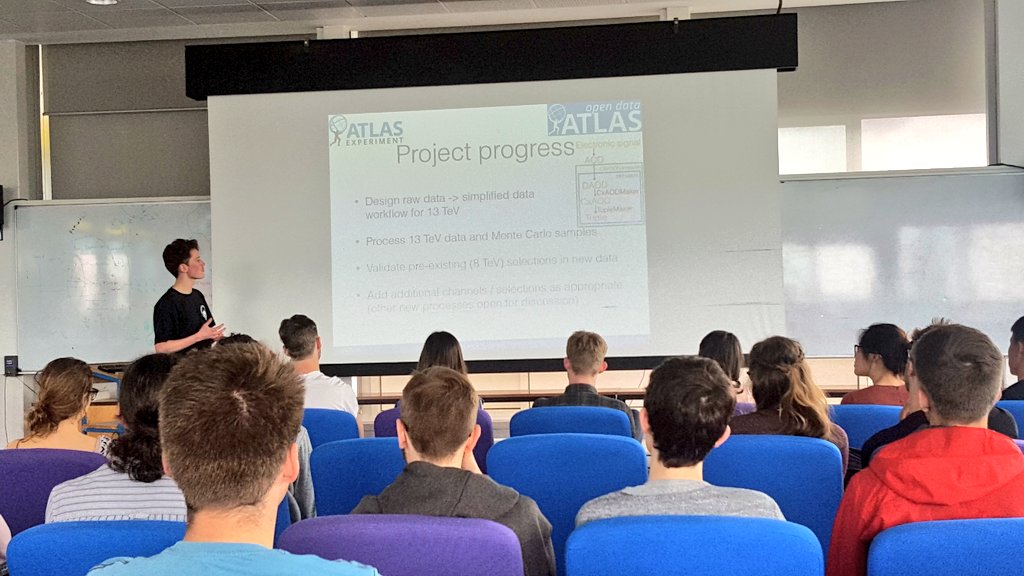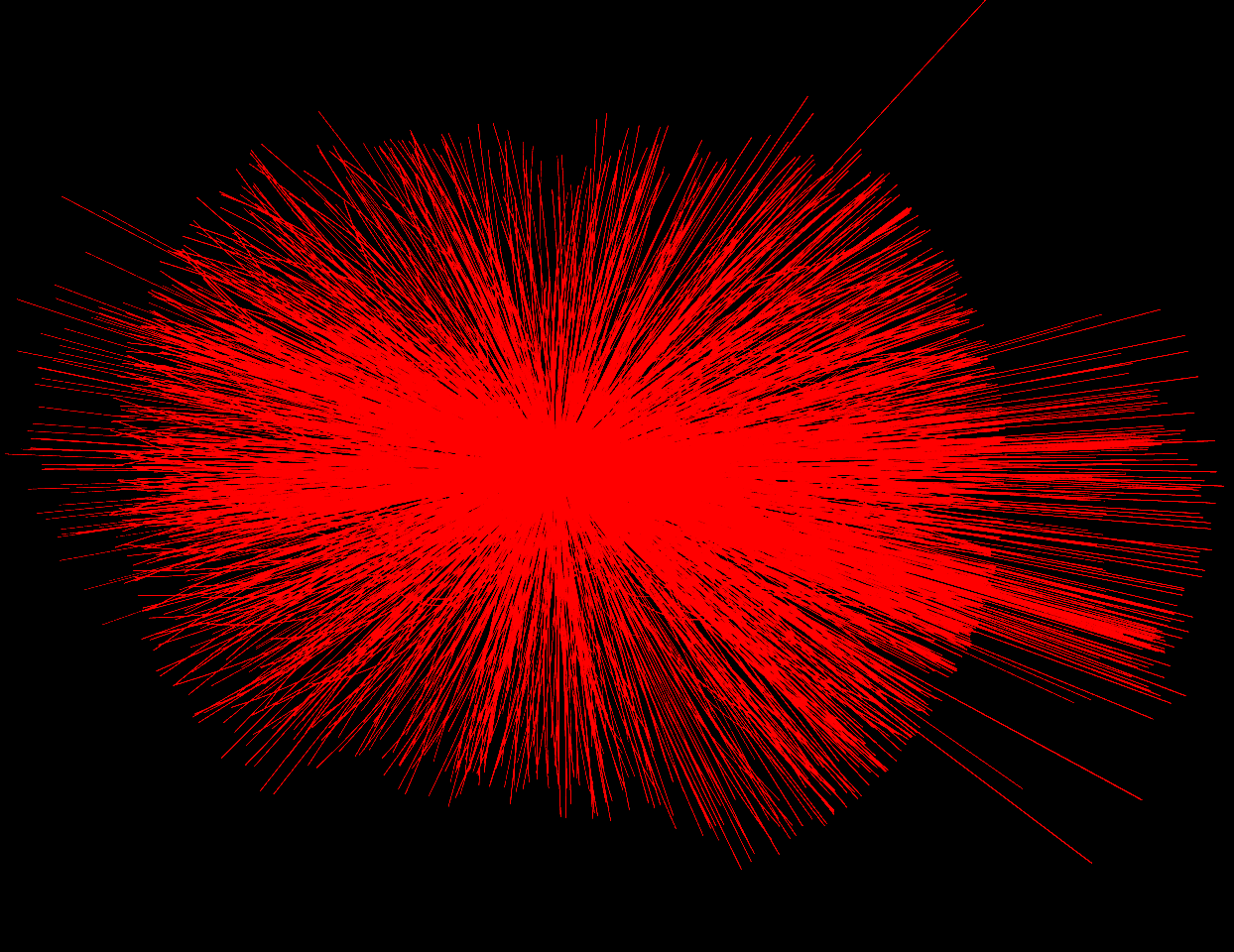Teaching university students with real ATLAS data
27 January 2021 | By
In February 2020, the ATLAS Collaboration released the first 13 TeV data of any LHC experiment. This was especially exciting for me, as I’d been preparing the 13 TeV ATLAS Open Data samples since the start of my Master’s, two and a half years before. This publication enables students from all around the world to learn skills in particle physics, data analysis, programming and machine learning. As a PhD student myself at the University of Sussex, I was really looking forward to seeing others use these data to learn these skills.
As PhD students, many of us work on our research and also teach, so working on ATLAS Open Data has been a fantastic opportunity for me to connect my research with my teaching. I’d like to tell you about some examples of what we’ve been doing at the University of Sussex to help students feel closer to research.

First year, first semester
Using Open Data in teaching can start right from the beginning of a student’s university career. In the first year introductory course “Physics in Practice” run by Fabrizio Salvatore, students are learning data-analysis techniques and programming skills, while critically assessing experimental data and communicating experimental results.
Students add code snippets to a Jupyter notebook throughout the module, ending the course with a plot of the Higgs boson mass, very similar to the plot used to discover the Higgs boson! With the plot and goodness-of-fit-criteria to hand, students are asked to explain whether the fit to data is good then extract a value for the Higgs mass and discuss whether their result is compatible with the value obtained by the ATLAS Collaboration. It was really nice to see this course go well last academic year, and thus be able to add new ideas for the coming year!
Dissertations in Open Data
One of my absolute favourite parts of my work has been co-supervising BSc projects along with Lily Asquith using ATLAS Open Data. Bachelor’s student Josh McKeown tested new physics objects like large-radius jets for an upcoming release of ATLAS Open Data, while student Stan Biryukov prepared Jupyter notebooks for analyses of Higgs boson and Graviton decays. Josh’s dissertation and Stan’s dissertation can be found on the CERN Document Server. I was very proud that Josh went on to a Master’s in Data Science and that Stan won the award for best University of Sussex BSc dissertation in his year!

Remote teaching? Open Data to the rescue!
With the current restrictions in place on the number of students that can enter university labs, using experimental data that have already been collected is a necessity. ATLAS Open Data to the rescue! Students can carry out interesting analyses with real proton-collision data, from their own computers. For the new academic year, Iacopo Vivarelli and Simon Peeters have prepared the use of ATLAS Open Data in the Advanced Physics Lab for third year students. Taking inspiration from a similar lab course at the University of Manchester, students can measure how often various types of bosons are produced in the collisions, but are otherwise left to explore and discover, which is exactly what we do as scientists!
That whirlwind tour covers only a few examples of using Open Data to teach our students skills in particle physics, data analysis and programming. Other examples include:
- Antonella De Santo’s module “Advanced Particle Physics”
- Clark Griffith’s module “Particle Physics”
The University of Sussex’s involvement with ATLAS Open Data goes beyond these examples though. Kate Shaw, Thomas Stevenson and I are part of the ATLAS Open Data team pushing the integration of research-led-learning into teaching – not only at the University of Sussex, but worldwide. We also have many ideas on how to mould ATLAS Open Data into more courses at the University of Sussex in future, and I can’t wait.
It’s really important that physicists share their teaching ideas with each other. By sharing experiences, we can better train our students in the transferable skills in programming, machine learning and more. Together we are training the scientists of the future.
ATLAS Open Data is being used at universities across the world – this really is a global endeavour! Check out this webpage and this document if you’re interested in what other universities are doing, or explore these conference presentations:
- “The journey to a fully educational HEP dataset” at ICHEP 2020
- “LHC Open Data for the world to see" at LHCP 2020
- “Using open data resources effectively” at CHEP 2019
- "The development of simple but real HEP data analysis examples" at CHEP 2019
- “Using open data resources effectively” at EPS 2019
- “ATLAS Open Data project” at ICHEP 2018
Another point worth emphasising is that you don’t need to be at university to use ATLAS Open Data! It is totally open to everyone, and a really great way to get into particle physics if you are studying at home or don’t have access to particle physics courses.





